
The History and Evolution of Combat Submission Wrestling
The History and Evolution of Combat Submission Wrestling Combat Submission Wrestling, often referred to as CSW, is a dynamic and exciting martial art that combines elements of wrestling, Brazilian Jiu-Jitsu, catch wrestling, and other grappling styles. With a rich history and a constantly strengthening nature, CSW has become a popular choice for those looking to enhance their self-defense skills and compete in combat sports.
Origins of Combat Submission Wrestling
Combat Submission Wrestling traces its roots back to the early 1980s when Erik Paulson, a renowned martial artist, practitioner, and instructor, began blending various grappling styles to create a comprehensive system. Paulson drew inspiration from his training under legends like Dan Inosanto, Rorion Gracie, and Larry Hartsell, incorporating techniques from a range of disciplines, including Brazilian Jiu-Jitsu, Judo, Sambo, and wrestling.
Development and Key Aspects
As Combat Submission Wrestling gained popularity, Erik Paulson founded the Combat Submission Wrestling Association (CSWA) to further promote and develop the sport. CSW emphasizes real-world self-defense applications, making it a practical choice for those seeking effective techniques for real-life combat situations. With an emphasis on both standing and ground-based fighting, CSW practitioners are trained to adapt to a variety of scenarios and ranges.
One of the defining characteristics of CSW is its focus on submission holds and techniques, which aim to neutralize and control opponents effectively. They taught practitioners to exploit joint locks, chokes, and other grappling techniques to force their opponents into submission. This emphasis on submissions makes CSW an excellent choice for those interested in competing in mixed martial arts (MMA) and grappling tournaments.
Besides its practical applications, Combat Submission Wrestling also provides a comprehensive training system that enhances physical fitness, coordination, and mental discipline. CSW training incorporates drills, sparring, and conditioning exercises, helping practitioners develop strength, endurance, flexibility, and improved reflexes. The rigorous training regimen not only prepares individuals for combat but also fosters personal growth, self-confidence, and mental resilience.
Evolution and Influence
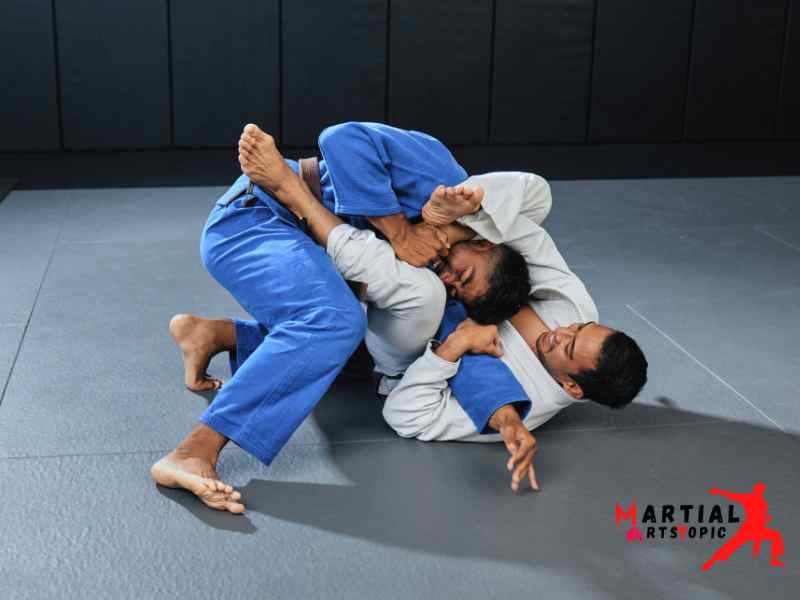
Over the years, Combat Submission Wrestling has continued to develop and adapt to the ever-changing landscape of combat sports. The integration of techniques from other grappling styles and the incorporation of modern training methods have allowed CSW to remain at the forefront of the martial arts world.
The influence of Combat Submission Wrestling extends beyond its own community, with many of its techniques and concepts being adopted by other martial arts and combat sports. The practicality and effectiveness of CSW techniques have been recognized and utilized by professional fighters in MMA, as well as law enforcement and military personnel worldwide.
The Benefits of Cross-Training in Combat Submission Wrestling
Combat submission wrestling is a dynamic and intense form of martial arts that combines various techniques from different disciplines. It requires strength, agility, and mental focus. One effective way to enhance your skills in combat submission wrestling is through cross-training. Cross-training involves incorporating elements from other martial arts or fitness practices into your training routine.
There are numerous benefits to cross-training in combat submission wrestling. Let’s explore some of them:
- Enhanced Physical Conditioning: Cross-training allows you to work on different aspects of your fitness, such as strength, endurance, flexibility, and cardiovascular health. By incorporating exercises from other disciplines, you can target specific muscle groups and improve overall physical conditioning, which is crucial in combat submission wrestling.
- Increased Skill Diversity: By training in other martial arts or combat sports, you will gain exposure to a wider range of techniques and strategies. This expanded skill set can give you a competitive edge in combat submission wrestling, as you’ll have a broader arsenal of moves to draw upon during matches.
- Improved Mental Adaptability: Cross-training challenges your mind to adapt to different training methods and styles. This mental flexibility can enhance your problem-solving skills and ability to think on your feet during combat submission wrestling bouts. It also helps you become more adaptable to different opponents and their unique fighting styles.
- Injury Prevention: Overuse injuries are common in combat sports. Cross-training allows you to vary your training routine, reducing the risk of repetitive strain on specific muscles or joints. By engaging in different activities, you can give your body a break from the repetitive movements associated with combat submission wrestling, reducing the likelihood of overuse injuries.
- Increased Motivation: Cross-training provides a refreshing change of pace from your regular combat submission wrestling training sessions. Trying recent activities and learning new skills can reignite your passion and motivation for training. This renewed enthusiasm can have a positive impact on your overall performance in combat submission wrestling.
- Networking Opportunities: Cross-training exposes you to a wider community of martial artists and combat sports enthusiasts. This opens up networking opportunities and allows you to connect with like-minded individuals who can share their knowledge and experiences. Building a strong network within the combat submission wrestling community can broaden your horizons and help you grow as a martial artist.
Takedowns and Throws: Combat Submission Wrestling
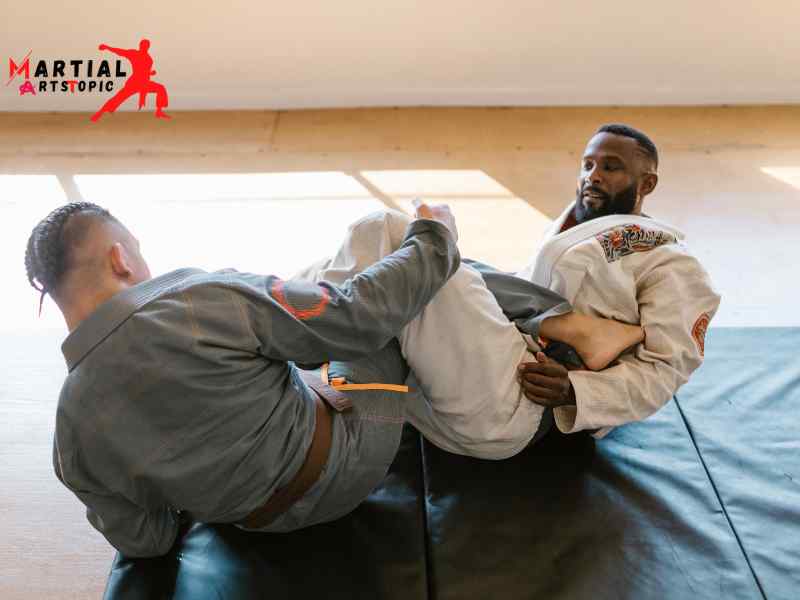
The world of combat sports and martial arts has ever fascinated takedowns and Throws: Mastering the Art of Combat Submission Wrestling If, then you must have heard about combat submission wrestling. This intense and action-packed discipline combines elements of wrestling, Brazilian Jiu-Jitsu, and other grappling styles to create a dynamic fighting system. In combat submission wrestling, the art of takedowns and throws plays a crucial role in gaining dominance over your opponent. The techniques and strategies behind takedowns and throws.
What is Combat Submission Wrestling?
Combat submission wrestling is a hybrid martial art that focuses on grappling and ground fighting techniques. They developed it by Erik Paulson, a renowned martial artist and one pioneer of Mixed Martial Arts (MMA). This style incorporates various grappling arts such as wrestling, Brazilian Jiu-Jitsu, Judo, and Sambo, creating a well-rounded system that is effective both in competition and real-life self-defense situations.
Mastering Takedowns and Throws
In combat submission wrestling, takedowns and throws are essential skills that can make the difference between victory and defeat. These techniques allow practitioners to control the fight by taking their opponent down to the ground, where they can utilize their ground fighting skills to their advantage. Let’s explore some of the most common takedowns and throws used in combat submission wrestling:
- Double Leg Takedown: One of the most fundamental takedowns in wrestling, the double leg takedown involves shooting in on your opponent’s legs, grabbing them both, and driving forward to take them down to the mat. This takedown is highly effective and can be executed from various positions, making it a staple in combat submission wrestling.
- Single Leg Takedown: Similar to the double leg takedown, the single leg takedown focuses on attacking only one leg of your opponent. They often employed this technique when your opponent’s stance leaves one leg vulnerable or when countering their attacks.
- Hip Throw (O Goshi): Derived from Judo, the hip throw is a powerful technique that relies on using your hip and leverage to throw your opponent over your shoulder. This throw requires proper timing and hip movement to generate maximum force and effectiveness.
- Firefighter’s Carry: The firefighter’s carry is a high-amplitude throw that involves lifting your opponent onto your shoulders while maintaining control of their upper body. This throw requires strength, timing, and technique, making it a favorite among combat submission wrestling practitioners.
- Suplex: A spectacular and high-affected throw, the suplex involves lifting your opponent off the ground and throwing them backward, often landing on their back or shoulders. This throw demands significant strength and timing, making it a powerful technique to showcase in combat submission wrestling.
Strategies for Success
To effectively execute takedowns and throws in combat submission wrestling, it’s crucial to develop a well-rounded skill set and employ smart strategies. Here are some key strategies to keep in mind:
- Setups: Utilize feints, footwork, and grip fighting to create opportunities for takedowns and throws. By creating openings and distracting your opponent, you increase your chances of successfully executing your techniques.
- Timing: Timing is everything in combat submission wrestling. Pay close attention to your opponent’s movements and look for openings to attack. Proper timing can make even the most complex throws feel effortless.
- Balance and Base: Maintaining a firm base and balance is crucial in both executing takedowns and defending against them. Work on developing a solid foundation to enhance your takedown game.
- Combination Attacks: Combine takedowns and throws with submissions and ground control techniques to keep your opponent guessing and off-balance. By seamlessly transitioning between different techniques, you can maintain control throughout the fight.
The Basics: Essential Techniques for Combat Submission Wrestling
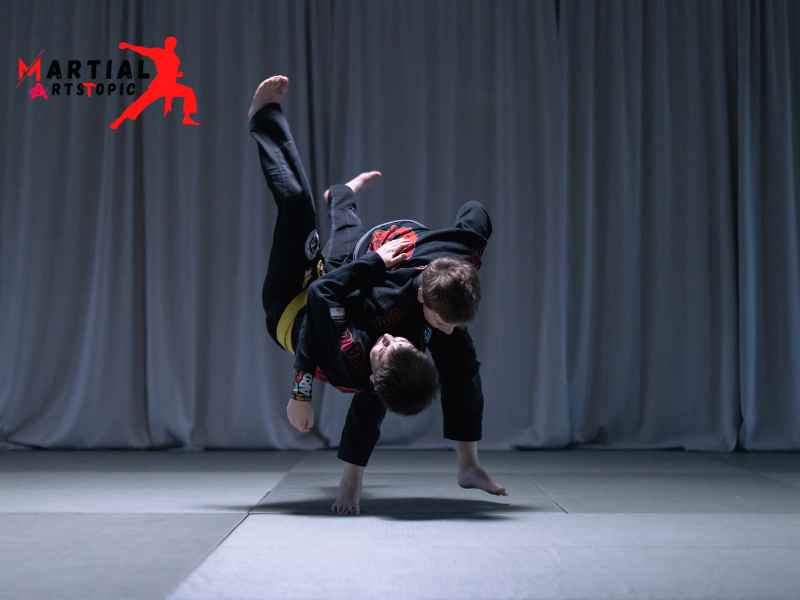
If you are someone who is passionate about combat sports and wants to take your skills to the next level, then combat submission wrestling is the perfect avenue for you. This dynamic and exciting sport combines elements of Brazilian Jiu-Jitsu, wrestling, and other grappling techniques to create a comprehensive and effective martial art.
In order to excel in combat submission wrestling, it is vital to have a firm foundation in the basics. These essential techniques form the building blocks upon which you can develop more advanced skills and strategies.
- The Guard: The guard is a defensive position where you are on your back, with your legs wrapped around your opponent. It allows you to control your opponent’s movements and set up various submissions. Mastering the guard position is crucial for combat submission wrestling, as it enables you to neutralize your opponent’s attacks and launch your own offensive moves.
- Escapes: Escapes are techniques used to regain a dominant position or free oneself from a submission hold. Learning different escape techniques is essential to avoid being trapped or submitted by your opponent. Practice escaping from various positions such as side control, mount, and back control, as these are commonly encountered situations in combat submission wrestling.
- Submissions: Submissions are the bread and butter of combat submission wrestling. These techniques are used to force your opponent to tap out or submit. Some common submissions include chokes, joint locks, and compression holds. It is important to focus on proper technique and leverage when applying submissions to ensure maximum effectiveness while minimizing the risk of injury.
- Takedowns: Takedowns are techniques used to bring your opponent to the ground. Having a solid repertoire of takedowns is crucial in combat submission wrestling, as it allows you to control the fight from the top position. Explore different takedown techniques such as single-leg takedowns, double-leg takedowns, and throws to diversify your skill set and keep your opponent guessing.
- Positional Control: In combat submission, wrestling, maintaining control over your opponent is key. Positional control refers to the ability to establish and maintain dominant positions, such as side control, mount, and back control. Mastering these positions will enable you to control your opponent’s movements, set up submissions, and transition smoothly between original positions.
- Conditioning and Strength Training: Combat submission wrestling requires a high level of physical fitness. Besides technique, it is important to prioritize conditioning and strength training to improve your overall performance. Incorporate exercises that target your cardiovascular endurance, muscular strength, and explosiveness to enhance your agility, power, and stamina on the mat.
Training Like a Warrior: Conditioning Exercises for Combat Submission Wrestling
Are you ready to take your combat submission wrestling skills to the next level? If so, it’s time to step up your conditioning game.
High-Intensity Interval Training (HIIT)
One of the most effective ways to increase your conditioning for combat submission wrestling is through high-intensity interval training (HIIT). This form of exercise involves short bursts of intense activity, followed by a brief recovery period. Incorporating exercises such as burpees, mountain climbers, and squat jumps into your HIIT routine will not only boost your cardiovascular endurance but also mimic the fast-paced nature of combat submission wrestling.
Plyometric Training
Plyometric exercises are explosive movements that help develop power and agility. Incorporating exercises such as box jumps, medicine ball slams, and tuck jumps into your training routine will improve your ability to generate force quickly, giving you an edge in combat submission wrestling.
Functional Strength Training
Combat submission wrestling requires a combination of strength and functional movement. Incorporating exercises like kettlebell swings, Turkish get-ups, and medicine ball throws will not only build strength but also improve your ability to move efficiently and explosively, essential for executing takedowns and grappling techniques.
Core Strengthening
A strong core is vital for maintaining stability and generating power in combat submission wrestling. Including exercises such as planks, Russian twists, and hanging leg raises in your training routine will strengthen your core muscles, enhancing your overall performance on the mat.
Cardiovascular Endurance Training
Combat submission wrestling matches can be physically demanding, requiring excellent cardiovascular endurance. Incorporating exercises such as running, swimming, or cycling into your weekly routine will improve your stamina and ensure you can go the distance during intense training sessions and matches.
Grip Strength Training
A firm grip is crucial for controlling your opponent and executing submissions in combat submission wrestling. Incorporating exercises like grip trainers, forearm curls, and towel pull-ups into your training routine will enhance your grip strength, giving you a significant advantage on the mat.
Agility and Footwork Drills
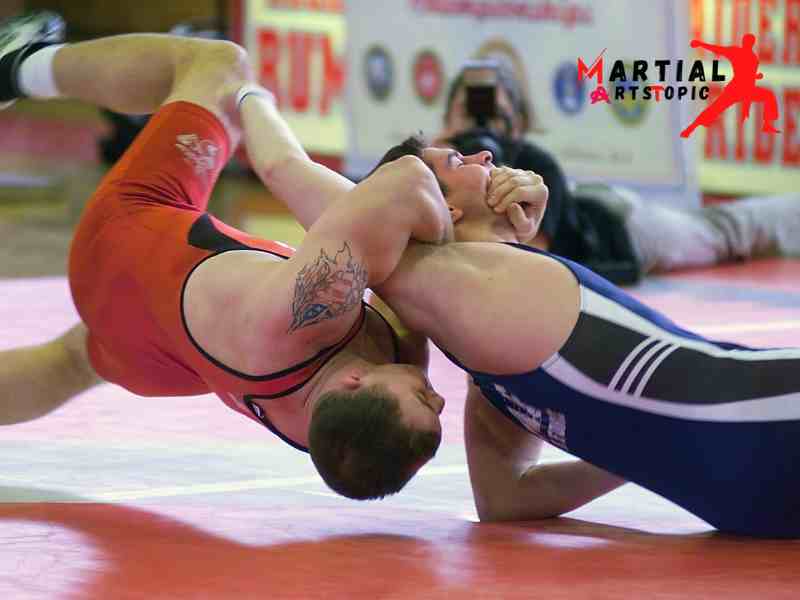
Quick footwork and agility are essential for navigating the mat and executing effective takedowns and escapes. Incorporating ladder drills, cone drills, and ladder hops into your training routine will improve your agility and footwork, making you a more elusive and formidable opponent.
Remember, consistency is key in conditioning for combat submission wrestling. Incorporate these exercises into your training routine at least three times a week, and you’ll see significant improvements in your endurance, strength, and overall performance on the mat.
So, if you’re ready to take your combat submission wrestling skills to new heights, don’t neglect your conditioning. By incorporating these exercises into your training routine, you’ll be well on your way to becoming a fierce and unstoppable warrior in the world of combat submission wrestling. Train hard, stay focused, and never give up!
Different Styles and Strategies in Combat Submission Wrestling
Combat submission wrestling is a dynamic and intense sport that combines elements of various martial arts disciplines. It requires not only physical strength and agility but also a strategic mind.
Brazilian Jiu-Jitsu (BJJ)
One of the most prominent styles in combat submission wrestling is Brazilian Jiu-Jitsu. Known for its emphasis on ground fighting and submissions, BJJ techniques are highly effective in bringing opponents to the mat and gaining control. With a focus on leverage and technique, BJJ practitioners often excel in using joint locks and chokeholds to secure victories.
Catch Wrestling
Originating in the late 19th century, catch wrestling is a style that emphasizes the importance of both ground fighting and stand-up techniques. Unlike BJJ, catch wrestling allows for a wider range of moves and holds, including leg locks and neck cranks. We know catch wrestlers for their aggression and versatility in both offensive and defensive positions.
Judo
Judo is a style that places a strong emphasis on throws and takedowns. In combat submission wrestling, judo techniques are often used to bring opponents to the ground, where wrestlers can then utilize their submission skills. Judo practitioners are skilled in off-balancing their opponents and capitalizing on their momentum to gain control.
Sambo
Sambo is a Russian martial art that combines elements of judo and wrestling. It focuses on throws, takedowns, and ground fighting, making it an effective style for combat submission wrestling. We know sambo practitioners for their explosive movements and adaptability in various situations.
Wrestling (Freestyle and Greco-Roman)
Wrestling, particularly freestyle and Greco-Roman styles, plays a crucial role in combat submission wrestling. Wrestlers are adept at controlling their opponents through clinches, takedowns, and ground control. Their strength and agility make them formidable opponents in the ring.
Now that we’ve explored different styles in combat submission wrestling, let’s delve into some key strategies that wrestlers employ to gain an advantage:
Positional Control
Maintaining control over an opponent’s body position is crucial in combat submission wrestling. Wrestlers aim to secure dominant positions such as mount, side control, or back control to effectively execute submissions or ground strikes.
Transitioning
Seamless transitions between original positions and techniques can catch opponents off guard. Wrestlers who can slide from one submission attempt to another, or switch between striking and grappling, have a significant advantage.
Timing and Patience
Knowing when to strike or submit is a crucial aspect of combat submission wrestling. Wrestlers must exhibit patience and wait for the opportune moment to execute their moves, often capitalizing on their opponent’s mistakes or openings.
Conditioning and Endurance
Combat submission wrestling matches can be physically demanding and mentally exhausting. Wrestlers must have exceptional conditioning and endurance to sustain their performance throughout the fight.
Combat Submission Wrestling vs. Brazilian Jiu-Jitsu: Understanding the Differences
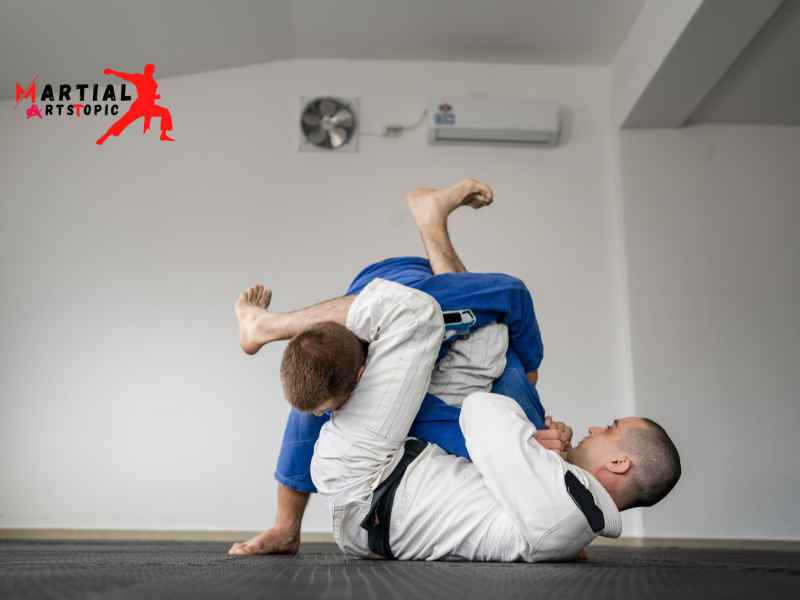
Understanding the Differences When it comes to martial arts, two popular disciplines that often come up in discussions are Combat Submission Wrestling (CSW) and Brazilian Jiu-Jitsu (BJJ). While both focus on grappling and submission techniques, they have distinct differences that set them apart. In this blog post, we will delve into these differences and help you understand which martial art might be the right fit for you.
Combat Submission Wrestling (CSW) is a hybrid martial art developed by renowned trainer Erik Paulson. It incorporates techniques from various combat sports and martial arts, including Brazilian Jiu-Jitsu, catch wrestling, Muay Thai, boxing, and judo. CSW emphasizes practicality and effectiveness in real-life situations. It combines striking, takedowns, and ground fighting to create a well-rounded self-defense system.
One of the key differences between CSW and BJJ lies in their origins. While CSW is a relatively new martial art, BJJ has a long and rich history. The Gracie family developed brazilian Jiu-Jitsu in the early 20th century, with its roots traced back to Japanese Jiu-Jitsu. BJJ focuses on ground fighting, using leverage and technique to neutralize opponents and gain dominant positions.
Another difference between CSW and BJJ is their approach to training and competition. CSW practitioners often train in a no-gi environment, meaning they don’t wear the traditional uniform (gi) typically associated with BJJ. This allows for a faster-paced, more dynamic training style. In contrast, BJJ training typically involves both gi and no-gi training, with practitioners often competing in gi tournaments that emphasize grips and control.
Technique-wise, CSW incorporates an array of submissions, takedowns, and striking, making it suitable for both self-defense and mixed martial arts (MMA) competitions. The focus is on adapting to different situations and utilizing a combination of techniques to gain an advantage. On the other hand, BJJ places a heavy emphasis on ground fighting, with an extensive repertoire of submissions and positional control techniques. BJJ practitioners aim to submit opponents through joint locks and chokes while on the ground.
While both martial arts have their unique strengths, they often considered CSW more adaptable to different scenarios. Its incorporation of striking and takedowns, along with its emphasis on real-life self-defense situations, makes it a popular choice for those looking to learn practical fighting skills. BJJ, on the other hand, is renowned for its effectiveness in ground fighting and is valued in the world of MMA.
Conclusion
Combat submission wrestling is a dynamic and versatile martial art that combines techniques from various disciplines such as Brazilian Jiu-Jitsu, wrestling, and submission grappling. It emphasizes both striking and grappling skills, making it a well-rounded combat system. Through its intense training and practical application, combat submission wrestling not only enhances physical strength and conditioning but also develops mental toughness and strategic thinking. Whether for self-defense or competitive purposes, practitioners of combat submission wrestling can gain valuable skills and confidence to navigate various combat scenarios. With its focus on both stand-up and ground fighting, combat submission wrestling provides a comprehensive approach to combat sports and self-defense. Overall, combat submission wrestling offers individuals an opportunity to challenge themselves, improve their overall fitness, and acquire effective techniques in a controlled and safe environment.
